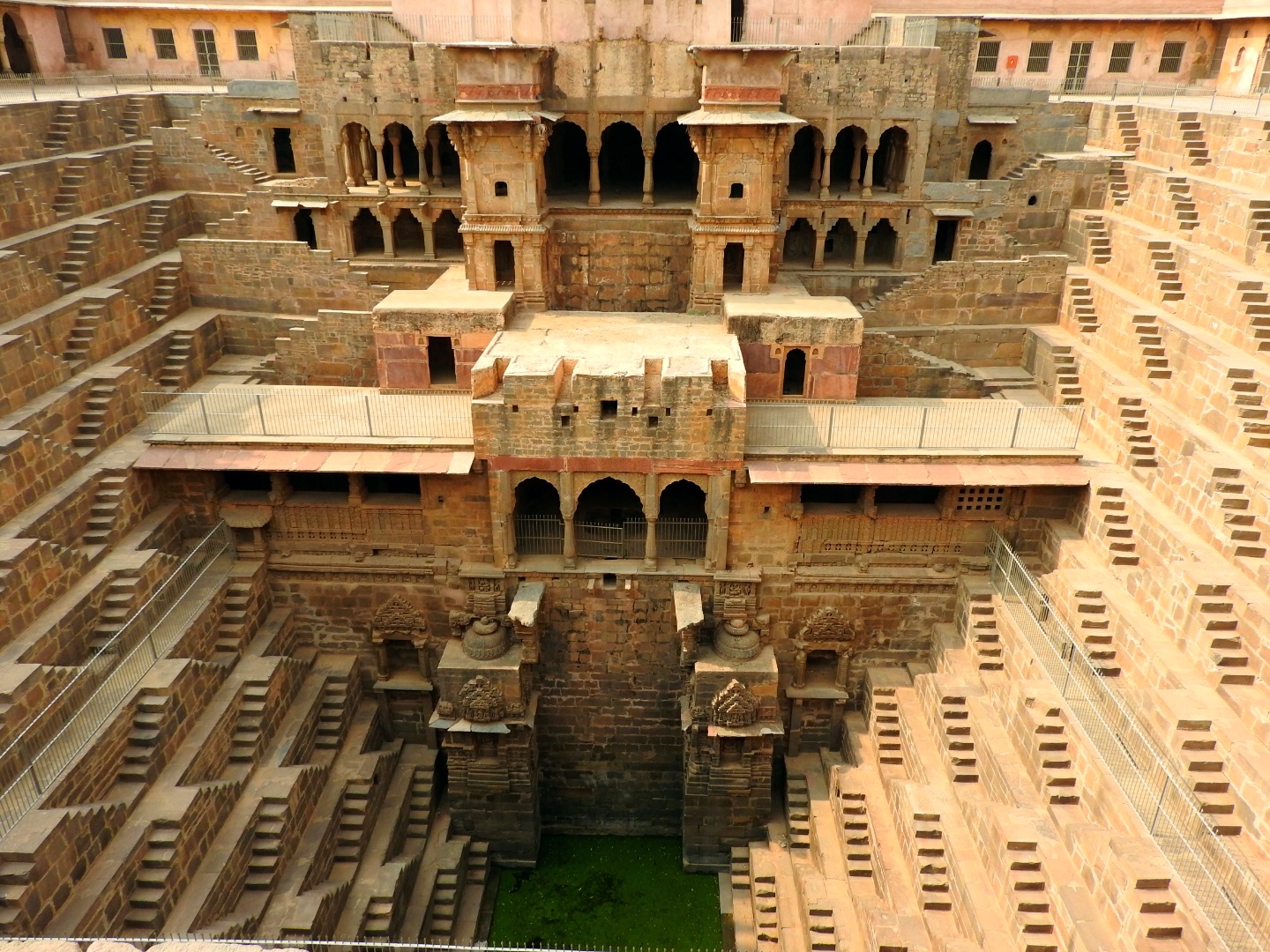Abhaneri: In the heart of the arid landscape of Rajasthan, where the sun-soaked earth cradles tales of ancient civilizations, lies the mesmerizing Abhaneri Stepwell. This architectural marvel, also known as Chand Baori, stands as a testament to the ingenuity and aesthetic prowess of the people who crafted it centuries ago. Join us on a journey through time as we explore the depths of Abhaneri Stepwell and unravel the secrets hidden within its intricate design.
Historical Tapestry: Abhaneri
Abhaneri Stepwell, located in the village of Abhaneri near Jaipur, dates back to the 9th century. Commissioned by King Chanda of the Nikumbha Dynasty, this stepwell served as more than just a source of water; it was a hub of community life, a space for social gatherings, and a refuge from the relentless desert heat. Its construction reflects the rich cultural and architectural heritage of the region.
Architectural Grandeur: Abhaneri
The most striking feature of Abhaneri Stepwell is its colossal scale and geometric precision. Comprising 3,500 narrow steps arranged in a perfect symmetrical pattern, the stepwell descends to a depth of 13 stories, reaching a staggering 100 feet. The steps form a mesmerizing labyrinth, leading visitors into the cool embrace of the well, shielding them from the harsh desert sun.
The intricate carvings on the steps and the surrounding walls showcase a fusion of architectural styles, blending elements of Rajput and Mughal design. The precision with which each step is laid and the meticulous detailing in the stone carvings leave an indelible mark on the minds of those who behold this ancient masterpiece.
Functionality and Symbolism: Abhaneri
Abhaneri Stepwell served a dual purpose — as a reliable source of water and as a communal gathering space. The stepped structure allowed access to the water at different levels, ensuring a steady supply even during the driest months. The surrounding galleries and pavilions served as meeting points for the community, fostering social cohesion.
Beyond its practical use, the stepwell also holds symbolic significance. The descending steps represent a journey into the earth, a passage to the netherworld, and ascending them is believed to bring one closer to the divine. The intricate carvings depict mythological themes and deities, adding a layer of spiritual depth to the architectural grandeur.
Preservation Efforts:
Over the centuries, Abhaneri Stepwell has weathered the test of time, standing as a silent witness to the changing landscapes of Rajasthan. In recent years, efforts have been made to preserve and protect this cultural treasure. The Archaeological Survey of India has played a crucial role in maintaining the structural integrity of the stepwell, ensuring that future generations can continue to marvel at its beauty.

Conclusion:
Abhaneri Stepwell, with its labyrinthine design and historical significance, beckons travelers and history enthusiasts to delve into the rich tapestry of Rajasthan’s past. As the sun casts shadows on the intricately carved steps, it is a reminder that even in the harshest environments, human creativity can flourish, leaving behind a legacy that transcends time and resonates with the echoes of ancient civilizations.

